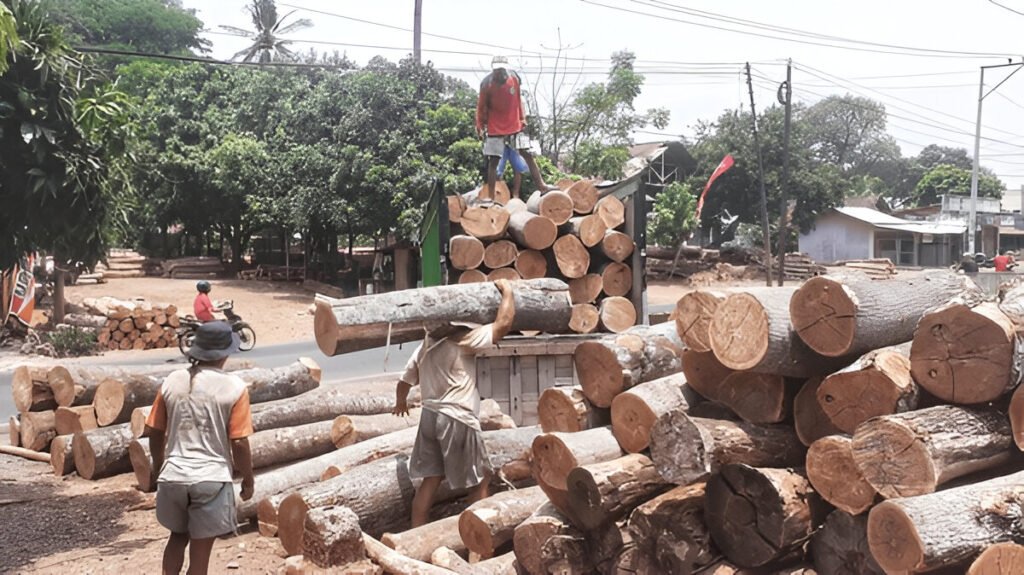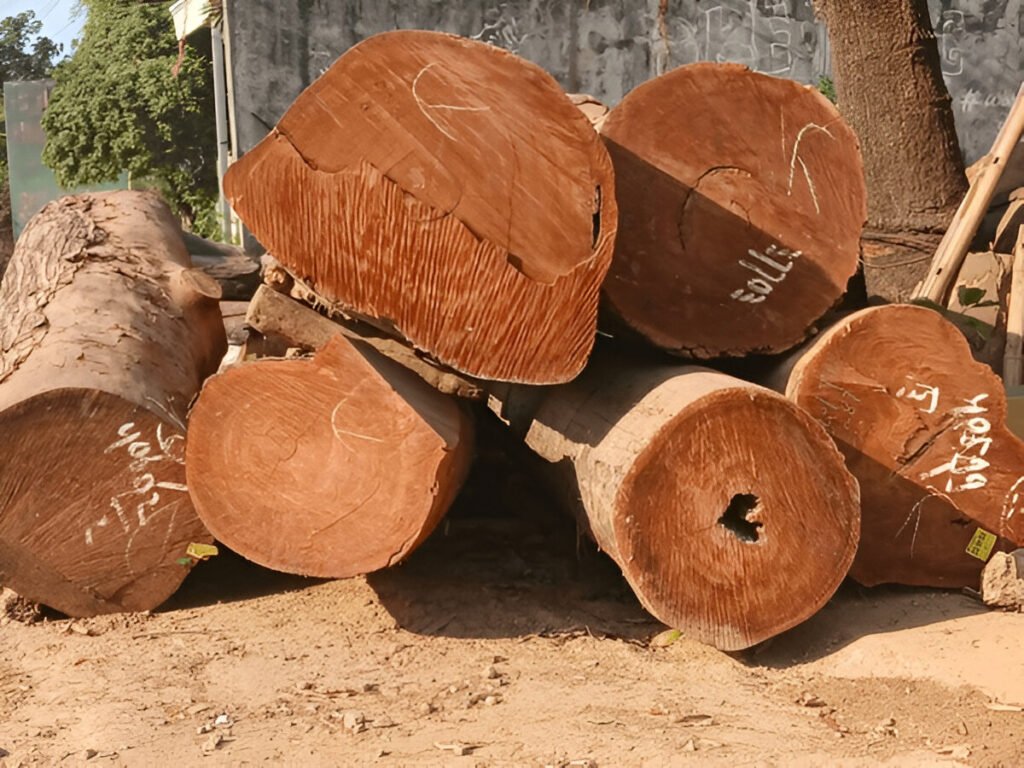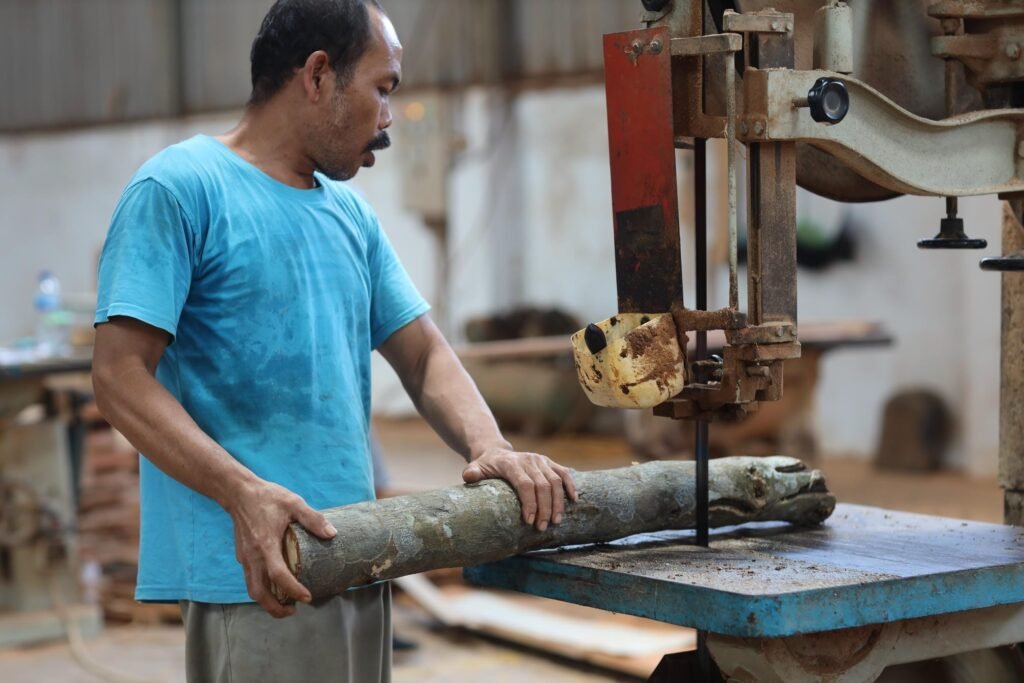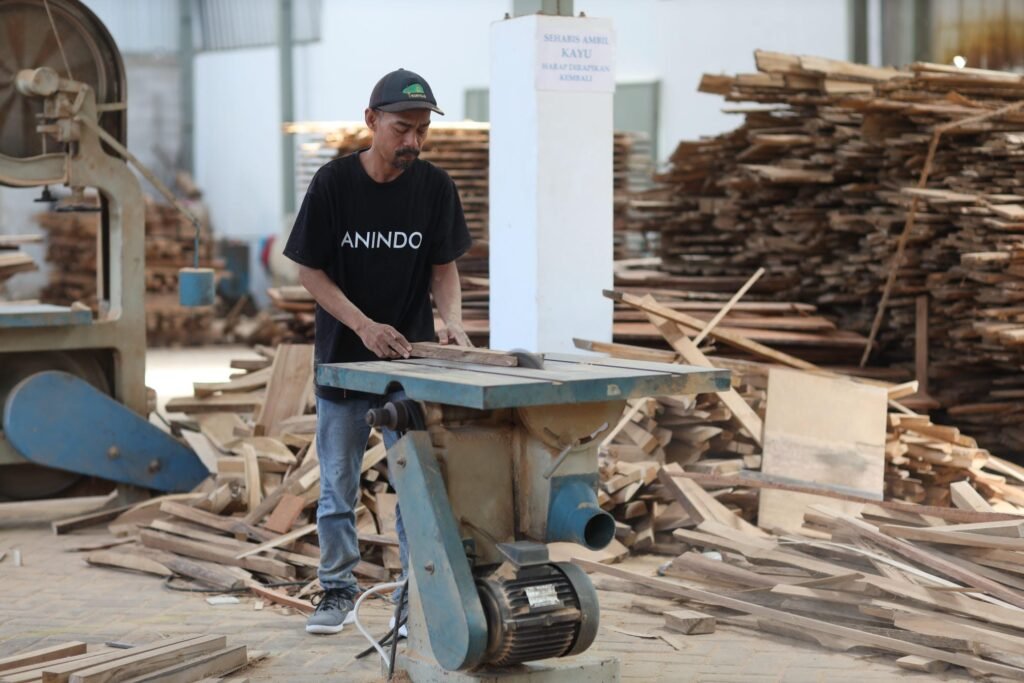PROCESS - RAW MATERIAL & SAWMILL CUTTING
1. Sourcing RAW MATERIALS
At Anindo, we pride ourselves on offering premium wood products that meet the highest quality standards
In our processing of timber and sawn timber, we focus intensely on the quality and origin of the materials we use
We source teak from licensed Indonesian plantations and certified suppliers to ensure FSC (Forest Stewardship Council) or equivalent standards
We evaluate logs based on teak standards: diameter (minimum 30cm for Grade B/C), straightness, and heartwood ratio
For alternatives like mindi or mahogany, we check for uniform color and density


Grade A Teak Wood
- Characteristics : Light golden-brown to reddish hues, fine micrograin texture, and uniform structure resistant to warping
- Applications: Premium outdoor furniture, luxury interior cabinetry/flooring,
- Advantages: Offers exceptional durability with natural oils resisting rot/decay, and superior aesthetic refinement in grain/color
- Limitations: Faces extreme scarcity and prohibitive costs
Grade B & C Teak Wood
- Characteristic : Warm brown tones with visible pores and grain variations
- Application : Outdoor garden furniture, commercial interiors, and mid-range tables/beds
- Advantage : Affordable, widely available, legally certified, and retains good natural durability
- Limitation : Requires more maintenance (e.g., annual oiling) for outdoor use
Mindi Wood
- Characteristics: Light to medium reddish-brown color with straight grain
- Applications: Exclusively recommended for indoor furniture due to its lower natural durability
- Advantages: Excellent workability, stable dimensional properties, and attractive finish
- Limitations: Not suitable for outdoor applications without extensive chemical treatment
Mahogany Wood
- Characteristics: Similar to Mindi but typically with darker, more uniform color
- Applications: Indoor furniture only
- Advantages: Strong, stable, and finishes beautifully
- Limitations: Requires protective coating for any outdoor exposure
2. Sawmill Cutting
We first remove the bark from logs to protect our machines and ensure the wood is clean
The logs are then precisely cut into straight planks using high-tech saws optimized for efficiency
We smooth the edges and trim each plank to achieve perfect, consistent dimensions and remove defects
Every piece is sorted by quality and size, ensuring they’re ready for immediate use or kiln-drying
Air-drying our wood is done carefully with spacers to prevent warping and ensure lasting strength


Step 1: Debarking
What it is: Removing the outer bark from logs.
Why: To keep cutting machinery clean and sharp, and to ensure the wood is free from dirt.
How: Using hand scalper, water jet, and manual sanding machine to remove
Outcome: The clean wood is ready for further processing.
Step 2: Head Rig Sawn (Primary Cutting)
What it is: Cutting logs into basic shapes, such as sawn planks or cants.
Why: To get the wood into manageable sizes and shapes for internal use.
How:
- For smaller logs: Center cuts or flat-side cuts.
- For larger logs: Stacked cuts (flat-side cuts).
Outcome: Uniform planks that meet specific dimensions.
Step 3: Edging
What it is: Trimming the rough edges of sawn planks.
Why: To ensure smooth edges and eliminate irregularities.
How: Manually trim uneven parts using precision blades
Outcome: Clean, square-edged planks for further processing
Step 4: Trimming
What it is: Cutting the wood to exact lengths and sizes
Why: To ensure each piece meets the required specifications
How: Detect splits or defects and use the cutting blade for precise cuts
Outcome: Planks with perfect dimensions and alignment for assembly
Step 5: Rough Sorting
What it is: Sorting planks into categories based on quality and purpose
Why: To decide whether a piece is for green (raw) or dry (dried out) products
How: Planks are assessed for size, quality, and suitability for different uses
Outcome: Efficient planning for the next stages, like drying or assembly
Step 6: Stickering
What it is: Adding spacers between planks during air drying
Why: To allow proper air flow and prevent warping
How: Wooden spacers (stickers) are placed between logs as they enter the drying process
Outcome: Ensures even air drying, reducing the risk of cracks or splits
